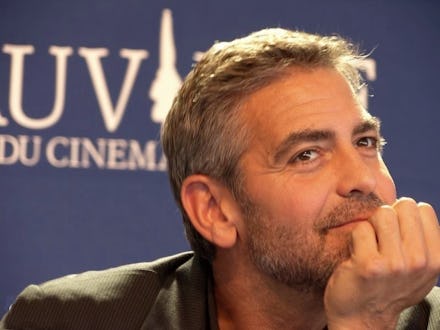How the 5 O'Clock Shadow is Killing the Shaving Industry

The news: Beards are in, and razors and blades are out.
A new report from market research firm Euromonitor has revealed that the shaving industry is running into a trend even triple blades can't slice: stalling sales of male razors and blades, due in large part to a burgeoning culture of facial hair where going days between a shave, maintaining a well-groomed five o'clock shadow, or even growing out a full beard is increasingly mainstream and, well, sexy. (Or at least interesting.)
"The weakness in some of the Personal Care categories in the U.S. … are kind of unprecedented," CEO Ward Klein of Energizer Holdings, which owns razor manufacturers Schick and Edge, said in November. "And I'm really talking about razors and blades in particular."
As Quartz noted, Gillette hasn't produced a new flagship product since it debuted the $20 Fusion ProGlide Styler nearly two years ago, which attempts to fulfill two roles as a razor and beard trimmer. Meanwhile, disposable razors are increasing in sales; Energizer's disposable sales grew 5% in 2013, while Bic has claimed double-digit growth. Cool startups like the Dollar Shave Club are also competing for market share in the margins, and with ads like this, how could they not be winning?
But beards are gross. Shut up.
Glasgow blogger Jonathan Pryce, author of two books on beards, says "It's also about authenticity. If you look at fashion, all men's trends are about being as masculine as possible. Ten years ago David Beckham and metrosexuality were the height of popularity in men's fashion. That was also around the time when flashy handbags, spending lots of money and a very extravagant lifestyle was acceptable."
Now it's not. So, for instance, Levi's has its vintage range, there's hardware on clothes, a lot of workwear, lumberjack shirts – all authentic, genuine, masculine traits.
... But the serious reason is that it's to do with the recession. It's seen as a bad thing to be extravagant so how do you show style? Grow a beard. It's free and it's also very personal."
Toronto psychiatrist Allan Peterkin, who's written three books on beards, suggests that "from an evolutionary point of view, male apes would jut their jaws out to appear more powerful when meeting their enemies. A beard seems to enlarge the jaw, so the guy with the more follicles is usually read as more masculine."
29-year-old Minnesota beard aficionado Chris Sorenson says "In the past, facial hair got the creepy-guy, homeless-man vibe. Now, you can carry yourself in a presentable and stylish way when you have a good-looking beard."
According to The Scotsman, 98% of Forbes Rich List men are clean-shaven, so there might be something to the notion that growing it out is about pantomiming a kind of working-class authenticity. And perceptions are changing; researchers Barnaby J. Dixon and Paul L. Vasey found in 2011 that men with beards aren't associated with vagrancy, but rather that participants in their study judged "bearded men as having higher social status than clean-shaven men."
But beards have a long way to go to reclaim their former glory. There hasn't been a U.S. president with a full beard since 1893. As Slate's Justin Peters noted, "one need only picture a dazed, broken Al Gore circa 2001, puffy and bearded like a white-collar woodsman gone to seed, to understand why politicos identify facial hair with failure and shame." But campaign consultant Jeff Jacobs suggests that if John Kerry had a beard, perhaps it wouldn't have been so easy for the Bush campaign to paint him as a pusillanimous, vaguely aristocratic flip-flopper.
With men's toiletries already overtaking shaving gear in market share, maybe we could see a bearded man rise to the top in a decade or two?